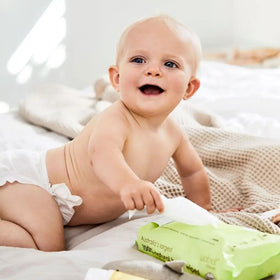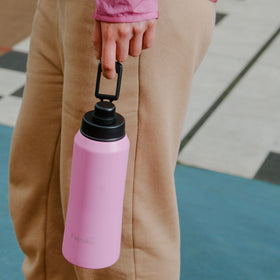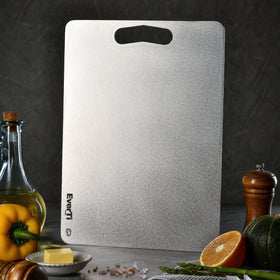
Simple Steps for Getting Your Cloth Nappies Clean & Bright
There's a lot of advice out there on the internet if you're not sure how to wash cloth nappies. If you believed everything you read, you'd end up pretty confused. But let me tell you, as the mother of two full time cloth nappied babies, it's actually pretty simple. Follow our hints, and your cloth nappies will come out clean and bright every time.
First of all, read the manufacturer's instructions. You don't want to void any warranties, and the manufacturers will let you know if there are any special care instructions. Just like new clothes, you should always wash nappies on your normal wash cycle before you use them on your baby. This will help remove any chemical residues left from the manufacturing process and will ensure that the nappies are clean. Washing before use will also help increase the nappy's absorbency.

Which laundry powder should you use?
There are specialist baby laundry powders and liquids available for washing baby's nappies and clothes. Babies are in nappies 24/7, so you need to choose a laundry powder with the best possible ingredients, in case there are any residues left after the wash. We recommend using an eco laundry powder, so that you can avoid the toxic chemicals that are often used in mainstream laundry powders. Although the jury is still out on whether enzymes cause irritations, we'd recommend choosing a non bio laundry powder to be on the safe side.
Whatever kind of laundry detergent you choose, use the manufacturer's recommended amount. You may also find that you need to do an extra rinse to make sure that you've got rid of as many residues as possible.
How to Wash Your Cloth Nappies
Whichever method you use, you'll need a big bucket with a lid that closes firmly to keep inquisitive little fingers out.
Wetpailing or Soaking
If you're using terrycloth or flat nappies, you can wash the old fashioned way called wetpailing. You'll need a bucket. As you change a nappy, you pop the dirty nappy into a bucket of cold water that's got a bit of laundry detergent in it. If it's a wet nappy, just pop it straight in. If it's a pooey nappy, scrape the poo off down the toilet and then pop the nappy into the bucket. When you've got a full bucket, drain the water off, and dump the lot into the washing machine. Put them through a normal rinse and spin cycle, as they've already had a soak. Comments on the wetpailing/soaking method:
- The bucket gets really heavy. That's no good for your back, and because it's awkward, you're more likely to slosh dirty nappy water all over your laundry.
- It smells. You've basically got pooey water sitting there for 24 hours - it's bound to stink.
- The good thing about the wetpailing method is that it's very easy and it works well.
- Wetpailing isn't recommended for most modern cloth nappies.
Drypailing
Drypailing is basically the same as the wetpailing method, but you don't soak the nappies in a bucket of water. As you change the baby's nappy, rinse the nappy if it's pooey, and then just pop the nappy into the bucket. You don't need anything else in the bucket, and when you've got a full bucket, you can dump the lot into the washing machine. Comments on the drypailing method:
- You don't have to wrestle with heavy buckets of stinky water.
- It doesn't stink (surprisingly).
- Drypailing doesn't remove stains as easily, and you'll need a hot wash to shift really stubborn stains.
- You may need to do a rinse cycle and a soak cycle first to give really mucky nappies a helping hand.
- Drypailing is recommended for modern cloth nappies.
Do's and Don'ts of Washing Cloth Nappies
New Zealand's The Nappy Lady has heaps of great tips on washing cloth nappies.
The Do's:
- Follow the manufacturer's care and washing instructions.
- Use the amount of washing detergent recommended by the manufacturer, not less or more.
- If you've got velcro (hook and loop) fasteners, make sure you fold them back so that they don't catch on the fabric of the nappies.
- Use a liner to help prevent staining nappies. Disposable liners also make getting rid of poo much easier.
- If you're not using a liner, get rid of as much poo as possible by scraping it down the toilet, then holding tight to the nappy while you flush the toilet water over the nappy to sluice any remaining poo off.
- If you're using a nappy cream, make sure that you've got a liner between the nappy and your baby's bum. Disposable liners can just get flushed, but if you're using a cloth liner with nappy cream, wash the liners separately. This will prevent the oils in the nappy cream coating the nappy and reducing absorbency.
- Line dry where possible. It's cheaper and more eco friendly. Invest in a clothes horse to hang nappies for at least 24 hours in winter, and then you can finish them off in a cool dryer if you need.
The Don'ts:
- Don't use fabric softener. Fabric softeners coat your nappies with oil, which repels water. This means that your nappies won't absorb properly and you'll get leaky nappies.
- Don't use bleaches, especially chlorine based ones that are not good for the baby. Just hang your nappies out in the sun, winter or summer, and they'll bleach naturally.
- Whether you're wet or drypailing, don't leave nappies for more than two days before washing. Otherwise you'll end up with a pile of stinky stained nappies. You're best to wash everyday if possible.
- Don't boil wash. A 60 degree wash is hot enough, and then you can leave nappies out in the sun to kill off any remaining bacteria.
- Don't use vinegar or baking soda to wash your nappies. It will damage the fabric and shorten the life of your nappies, and you may void the manufacturer's warranty.
- Don't soak your nappies in bleach or other harsh stain removers. You'll void the manufacturer's warranty and shorten the life of your nappies. If you really want to soak them, just use water or half the quantity of your usual laundry detergent and soak them for a couple of hours.
Strip Washing Cloth Nappies
Strip washing is often recommended if your nappies are really smelly, or if they've lost their absorbency. But before you go ahead and do a strip wash, there are a couple of things you can try.
If your baby is leaking through nappies, first of all, check the sizing and the fit. You may need an extra booster if your baby is getting bigger and drinking more. If you're using sized nappies, it may be time to go up a size.
Once you've ruled out sizing and fit, try doing a couple of warm washes with a little extra washing detergent than you'd normally use. The warm water and extra suds might be all that's needed to remove oil buildup. If neither of these helps, The Nappy Lady has another tip. Take your nappy and hold it under a dripping tap. If the water beads on your nappy and doesn't soak in, you've likely got an oil buildup. If that's the case, she recommends trying the following:
Step 1
Try it with one nappy first. You don't want to do this to all of them and find out that it's not the problem. Get the nappy and wet the area that has the build up. If it's a pocket nappy, wet the whole liner area. If it's an insert or nappy, wet the whole thing.
Step 2
Get about a teaspoon of dish washing liquid (with no hand moisturisers) and smear it across the area. Rub the fabric against itself to make the whole area really soapy, like you would do with a face cloth.
Step 3
Leave it to sit all nice and soapy for about 10 - 15 mins. This allows the de-greaser to infiltrate all the layers.
Step 4
Give it a quick rinse under the tap or in a bucket of warm water.
Step 5
Pop it through the wash without any extra washing solution or detergent.
Step 6
Dry it as per your normal routine and hopefully this has fixed your problem. If it has, you can go ahead and strip wash the rest of your nappies this way.










